Fresh from the woods
Spring may well conjure up mental images of lambs in fields, bluebells in woods, sunlit daffodils and birds building their nests but for me the word brings to mind the smell of Wild Garlic (Allium ursinum)
Wild Garlic
The woods in March, or even earlier in mild winters, are so often carpeted with the lush green leaves of this most useful plant, and I am sure you have all smelled the delightful and appetising aroma it gives out. I can remember local woodlands I used to visit with my parents as a small child and so Wild Garlic or Ransoms, as it is also known, became vividly associated in my mind with everything which spelled spring.
It is a plant that calls out to us, appealing to our eyes, our noses, and our stomachs. Every part of Wild Garlic can be eaten and it is just as good as the cultivated variety, or possibly superior in some ways.
The leaves can be collected and eaten fresh in salads, in sandwiches, with cheese, or if you are like me, munched in the woods where they grow. You can also cook it like spinach or add it to soups, savouries, pasta dishes and curries – in fact, anywhere you would use the ordinary garlic.
Wild Garlic, like its cultivated relative, has many health-giving properties too. It is great for lowering high blood pressure and helping to maintain it in the normal range, and it is useful for reducing the levels of cholesterol in the blood. It stimulates the glands, is an antibiotic and also acts as a, diuretic.
The white starry flower umbels are formed from April onwards and these too make a great addition to salads, although the flavour is somewhat stronger than the leaves.
After the plant has finished flowering and seeding it dies down and becomes a bulb again, which lies dormant until the next spring, and because it has seemingly vanished it makes way for other summer woodland plants to occupy the space above ground. This period of dormancy, of course, gives us the option of harvesting Wild Garlic all year round.
Wild Garlic is only one of the delights of spring that an active bit of foraging can find. There are very many other leaves that can be cooked as greens.

Foraging for Spring Greens - Wild Garlic, Chickweed and Brooklime
by BardofEly
Foraging for edible wild plants is becoming popular with many people and spring brings spring flowers and spring greens including Wild Garlic.
Buy Food For Free by Richard Mabey
The forager's Bible
 | Food For Free (Collins Gem) Collins Only $7.95 |
 | Food for Free: 50th Anniversary Edition William Collins |
 | Food for Free Collins Only $8.49 |
Stinging Nettles
Nettles are good to eat
Stinging Nettles (Urtica dioica) are one of the most common edible wild plants and the young shoots can be prepared like spinach. You will be glad to know that as soon as they are cooked they miraculously lose all their power to sting, although a pair of gloves might come in handy when collecting.
Food For Free
Richard Mabey's classic book
Food For Free author Richard Mabey gives the following recipe: “As a straight vegetable they should be boiled gently in a closed pan for about four minutes, in no more water than adheres to the leaves after washing. Strain off the water well, add a large knob of butter and plenty of seasoning (and perhaps some chopped onion), and simmer for another five minutes turning and mashing all the while.”
The author goes on to say that because he feels the resulting dish is “rather insipid”, nettles are better used added to other greens and vegetable dishes.
The good news is that there are plenty of other wild plants to choose from so perhaps to cook up a “pick ´n´ mix” of spring greens is the way to go, and leaves room for personal taste and a bit of experimentation.
Hops
Not just for brewing beer
Another such herb that can be cooked in much the same way is the Hop (Humulus lupulus). You can pick the young leaves and shoots, which can be found in hedgerows and at the edges of woods where the plant grows, but make sure you get them no later than May when they become too tough for eating.
As you continue your ramble in the leafy lanes and woodland in spring you are sure to encounter the Garlic Mustard or Hedge Garlic (Alliaria officinalis) with its white clusters of flowers and strong smell and taste like the herb it is named after. This is another excellent plant to add to sandwiches and salads and it can liven up a mix of spring greens too.
Hops
The young shoots are edible
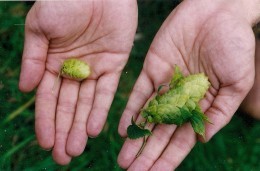 Ordinary hop and a hop showing terato... |
Foraging for Brooklime, Plantain, Elderflower and Hops
Edible plants found on a riverbank
Cow Parsely
Wild Chervil
Another common herb of the spring woodlands, hedge banks and country lanes is the Cow Parsley or Wild Chervil (Anthriscus sylvestris), which has divided ferny leaves and from April onward bears umbels of lacy white flowers on stems which can reach 1.2m (4ft) in height. The leaves make a good addition to salads, omelettes, soups and other dishes, and the plant can still be found in leaf in late autumn and winter.
Be careful not to pick the very poisonous Hemlock (Conium maculatum), which has similar leaves but differs in being much bigger, giving off an unpleasant smell and has dark purple spots on its stems.
Another similar but very dangerous plant is the Fool’s Parsley (Aethusa cynapium), but this is much shorter, and tends to grow more often on arable land and in waste places. It is usually found as a single specimen.
Other wild flowers you are likely to find and which you can use in your cooking include Goutweed (Aegopodium podagraria), Hogweed (Heracleum sphondylium), Coltsfoot (Tussilago farafara), Chickweed (Stellaria media), Dandelion (Taraxacum officinale), Goosegrass (Galium aperine), Ground Ivy (Glechoma hederacea), Sorrel (Rumex acetosa) and Yarrow (Achillea millefolium).
The leaves of all of these can be treated like spinach, although if you are using sorrel it is a good idea not to use too much because it contains oxalic acid, which can aggravate and help cause arthritis and gout. It is also recommended that you take along a good wild flower book to make sure of your identification of the plants you find – and never eat plants unless you are certain of what they are.
Edible leaves
Foliage you can eat
The Hawthorn (Crataegus monogyna) buds and young leaves have long been a traditional countryside item to nibble and they are also known as “bread and cheese”, although the similarity to these foods I have never been able to understand. Nevertheless, they have a pleasant fresh and nutty taste and can be eaten while you are walking or gathered to be added to oily salads.
Besides the Hawthorn, another tree with edible foliage in spring is the Beech (Fagus sylvatica). In April the young leaves are delicate and soft and they shine in the sun. They can be eaten fresh or added to give variety to a seasonal salad.
Spring is of course, the season that frogs, toads and newts return to the ponds and lakes. If your rambles take you in the vicinity of these amphibians you may also come upon another green salad plant known as Brooklime (Veronica beccabunga).
This member of the speedwell family produces pretty little blue flowers, grows all year round and is common at the edges of ponds, ditches and streams. Although it has a slightly bitter taste the Brooklime has been widely used as a salad ingredient.
The young shoots and leaves gathered before flowering should be washed well before eating. The Scientific American praised the American subspecies of the plant in this way: “A salad plant equal to the watercress. Delightful in flavour, healthful and anti-scorbutic.”
So I hope this brief look at some of the wild foods on offer will help you to enjoy your spring rambles more and that you will find some spring greens to enrich your eating pleasure.
NB: First published in Permaculture magazine Number 59
Copyright © 2012 Steve Andrews. All Rights Reserved.
Best books on Edible plants
Find out more about foraging
 | Edible Wild Plants: A North American Field Guide to Over 200 Natural Foods Union Square & Co. |
 | Edible Wild Plants: Wild Foods From Dirt To Plate (The Wild Food Adventure Series, Book 1) Gibbs Smith |
 | Sam Thayer's Field Guide to Edible Wild Plants: of Eastern and Central North America Foragers Harvest Press |
Spring Greens recipes
How to prepare Nettles and Brooklime
Nettle Fritters
Gather a bowlful of young nettles, and after washing, blanch them in boiling water. Rinse them in cold water to help preserve the green colour, and drain and pat them dry on kitchen towels. Chop the nettles up and mix in a bowl with one egg. Season to taste with salt, pepper and grated nutmeg. Form into small fritter shapes and dab all over with flour. Fry in melted butter turning frequently and serve.
Brooklime Salad
Gather a small quantity of young shoots. Wash well and mix with finely chopped onion. Make up a sauce using 2 tablespoons of white wine vinegar, 2 tablespoons of olive oil, 1 teaspoon of hot mustard, and salt and pepper to taste. Then toss the brooklime and onion in this dressing, leave for about 1 hour, and garnish with sliced hard-boiled egg.
You might also like
The Magic and Myth of British FungiMushrooms and toadstools grow all over the world, and whilst many are edible ...
Stinging Nettles are good for butterflies and good for youStinging Nettles are a food-plant for many caterpillars and an edible weed th...
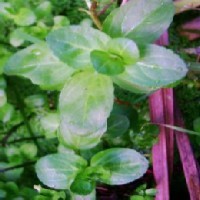

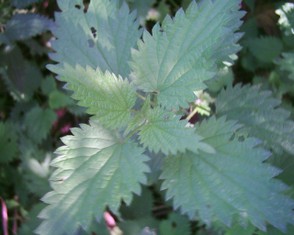
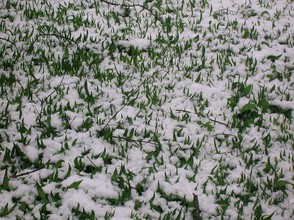
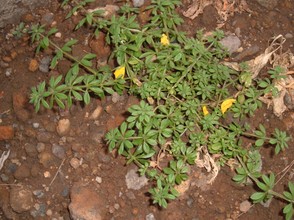
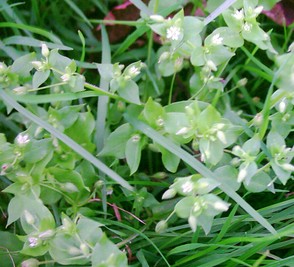
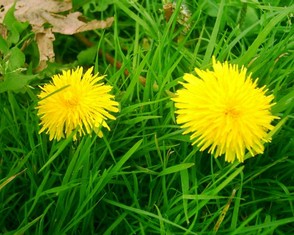
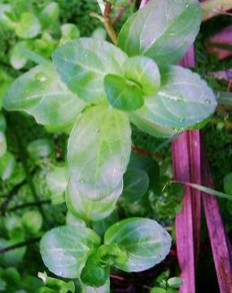

 What to see and do in Icod de los Vinoson 06/28/2016
What to see and do in Icod de los Vinoson 06/28/2016
 Herbs of the Sun, Moon and Planets is the follow up to Herbs of the Northern Shamanon 10/03/2015
Herbs of the Sun, Moon and Planets is the follow up to Herbs of the Northern Shamanon 10/03/2015
 Music for Pagan Weddingson 03/07/2013
Music for Pagan Weddingson 03/07/2013
 Los Silos is part of Tenerife’s Low Island or Isla Bajaon 02/23/2013
Los Silos is part of Tenerife’s Low Island or Isla Bajaon 02/23/2013

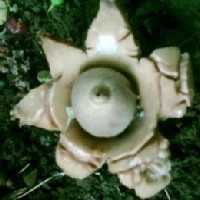
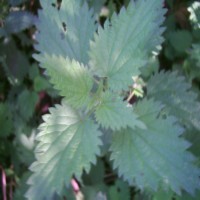
Comments
Start off with easy to recognize ones like those I have written about here!
I wouldn't mind eating wild greens - my trouble is that I'm so unschooled as to what to look for, I'm afraid I'll be picking the poisonous weeds along with the good ones.